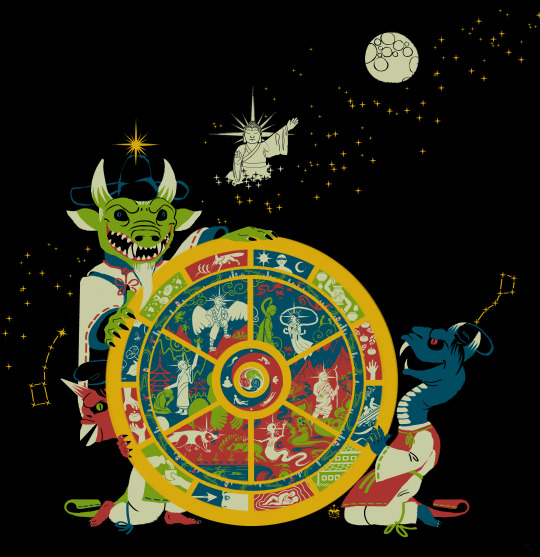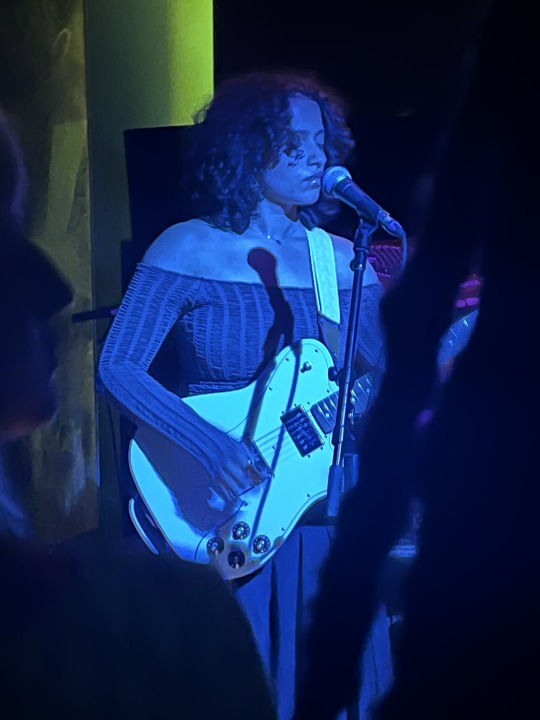#tendai
Text

A sculpted image of the deity of good fortune Daikokuten (大黒天) dating to the very early 9th century at Kongōrinji Temple (金剛輪寺) in Aishō Town, Shiga Prefecture, said to be one of if not the earliest example of this particular deity in Japan and here seen during a rare unveiling lasting until December 10, 2023
#japanese art#buddhist art#大黒天#daikokuten#滋賀県#shiga prefecture#愛荘町#aisho#金剛輪寺#kongorinji#天台宗#tendai#arte japonés#arte budista
110 notes
·
View notes
Text

April 2023: Tokyo, Japan
Dancers perform during the Shirasagi-no Mai, or White Heron Dance, at the Sensoji Temple
Photograph: Tomohiro Ohsumi/Getty Images
293 notes
·
View notes
Text
Make Your Own Buddhist Sutra Book
Lately I’ve been talking a lot about home Buddhist practice, including home Buddhist services and such. These are things that devour lay-Buddhists often do (myself included), but then I realized I never talked about making one’s own sutra book.
There are a couple reasons why one might make their own…

View On WordPress
5 notes
·
View notes
Text

its that day again
#pi day#tendai#doodle#furry#furry art#i drew this so fast cuz i feel not good today hehe#anyways this is like the 7th or 8th year of drawing these guyse for pi day
3 notes
·
View notes
Photo

Bhavacakra with Matarakishin
This was a big project I worked on as a milestone for my studies in my faith, Shinbutsu Shuugou.
Symbolism explanation under the “readmore”
The piece uses 6 colors total: Black, white, yellow, green, red and blue. These can symbolize many things depending on the context, but here I intended for it to reference both the five hindrances + the Buddha AND the six realms.
The middle contains three animals: the snake, the boar and the bird. They represent the three poisons and are arranged in the shape of three magatama (mitsudomoe).
The first ring contains the duality of karma. This is usually depicted with a sharp border between the side where someone either falls to Hell or becomes a buddha, but I decided for the theme of this mandala to be the nonduality of opposites. For that reason both sides take on a spiraling waning and waxing shape. The figures in them are just vague silhouettes, as the concept of karma is an abstract concept that’s hard to articulate or accurately depict.
The six realms are depicted tilted. This is simply to draw more attention to the figures outside the mandala. The lower realms mainly use red and the upper ones mainly use blue (reflecting the way the karma layer’s colors are set up).
The buddha are all different beings depicted doing something benevolent instead of holding the traditional symbols buddhas hold. In each case their buddhahood is symbolized by their color (white represents buddhahood and liberation) and a star shaped halo.
Otherwise I didn’t want to depict these buddhas as perfect beings, I wanted to draw attention to the fact that the origins of dukkha can’t be exorcized, it can only be minimized and the buddha path is never complete. Parts of these buddhas extend to other realms symbolizing how buddhas can be anyone and anything anywhere.
The twelve dependent originations are abstract just like the duality of karma for the same reason. In many cases I used Japanese symbols to interpret these elements, because my faith is rooted in Japanese culture.
The wheel itself is gold, the color of earth according to wuxing. The element of earth represents dualities, the element of change and also stability, both yin and yang and all four seasons. It’s related to the figures holding/turning the wheel.
Matarakishin is a form of the kami Matarajin, a kami of, arguably, dukkha. He’s strongly connected to the element of earth, travel (be it physical or metaphorical) and is a guardian of Buddhist treasures and the Pure Land Sutra. He governs the unseen world, kakuriyo ( 隠り世 ) as a shukujin ( 宿神 ) a kami that governs fate, and with it, change. Him and his attendants represent the three poisons and are generally considered a single entity.
Faithful to traditional bhavacakras, he’s depicted fierce and horrifying as a symbol of change, same with his attendants Nishita and Teireita. Matarakishin is a green kishin (oni kami), representing greed and takes on a boar-like appearance. Between his horns is the Pole Star, a celestial body he embodies. It’s the same star used for the buddhas’ halo representing his buddha nature.
Teireita is a blue oni taking the form of a snake (representing hatred). They embody the Big Dipper, which is why the have the constellation between their horns. The final two stars connected align exactly with the Pole Star.
Nishita takes the form of a bird and is a red oni (represeinting ignorance). Their single horn point to the Little Dipper. Matarakishin stands directly above them because the Pole Star is one of the stars making up the Little Dipper.
Four of their hands hold the wheel of dharma in total, representing the four sights.
Above them, Shakyamuni Buddha can be seen pointing at the Moon, which represents liberation from dukkha. The Milky Way represents the uncountable amount of buddhas the lived, live and will live on Earth.
#my art#art by op#buddhism#buddhist art#bhavacakra#shinbutsu shuugou#tendai#contemporary buddhist art#I'm a little nervous about posting this#but I wanted to make this as like#a milestone#as to how much I learnt so far#it has unconventional elements in it#which is why idk how people who Know Things about Buddhism would react#since my beliefs are rooted in Japanese culture#but still#I really do want to share#if for nothing to see how people react
58 notes
·
View notes
Video
youtube
tendai - Lately,
3 notes
·
View notes
Text
youtube
what inspires you?
August 18, @allpointseastuk
featuring a few wonderful people who personally inspire me; tendai, Divine, Sage and Joel, Sai and Simi.
3 notes
·
View notes
Audio
this song truly does something to me.
5 notes
·
View notes
Text
"NEED YOU"
youtube
3 notes
·
View notes
Text

A sculpted image of Nyoirin Kannon Bodhisattva (如意輪観音菩薩) of uncertain date at Kongōrinji Temple (金剛輪寺)--a.k.a. Matsuodera (松尾寺)--in Aishō Town, Shiga Prefecture
#japanese art#buddhist art#如意輪観音菩薩#如意輪観音#nyoirin kannon#観音菩薩#観音#kannon#avalokitesvara#滋賀県#shiga prefecture#愛荘町#aisho#金剛輪寺#kongorinji#松尾寺#matsuodera#天台宗#tendai#arte japonés#arte budista
25 notes
·
View notes
Text
Please join this server dedicated to Japanese Buddhism! ☸️🙇🏻
1 note
·
View note
Text
Who Is Amida Buddha: the Buddha of Infinite Light?
Hello Readers,
Recently I talked about the Pure Land Buddhist tradition, and in particular the Three Pure Land Sutras that are central to the tradition.
But then I realized that I’ve never really explained who Amida (Amitabha) Buddha is. Now that the English language site for Jodo Shu has been retired, I wanted to fill in some gaps in information, and explain Amida Buddha’s significance to the…

View On WordPress
5 notes
·
View notes
Video
youtube
1 note
·
View note
Text
Léa Sen, Live @ Laylow, London
I Saw Léa Sen play Laylow, London on the 9th of August 2023 which the last night of a two date residency.
Sen's music has an interesting air to it in that it projects a feeling of heaviness yet, simultaneously manages to rise above it, transforming it into what I would decribe sensorially as having a heavy head, but light body.
That being said, I went into this show being unsure of what to expect. I knew there would be some interesting guitar and killer vocals - that much I'd seen during Sen's Boiler Room performance on Youtube (if you haven't seen it, check it!). But what I didn't expect was a full band, guests and an even improvised song lamenting her incorrect tuning!
The night was; to say the least, remarkable.
It started with a brief showing from opener MEYY, who I wasn't familiar beforehand, but did a good job with a primarily acoustic driven set. Following this, there was a brief interlude and then, on came Sen.
Her band was comprised of three people, Florian Fourlin on keys and saxaphone, her drummer (who I unfortunately didn't catch the name of, but absolutely don't want to gloss over) and Sen herself on guitar - relatively pared back in terms of personnel, but MY did they deliver! I even later found out that the band had only played together 3 times before - I could not have predicted that all, they were VERY tight.
Set list wise, there was a nice mixture of new/old songs (new is relative because Sen is a newer act and the songs performed were taken from her two EP's, the oldest of which was released in 2022) as well as demos of upcoming tracks.
When it came to the crowd favourites, Sen did well to enhance the tracks, whilst maintaining the familiarity. The addition of a ride cybmal to "I Feel Like I'm Blue" added a wonderful sense of lift and progession to the song - I already enjoyed the track, but it added a whole new dimension to what the studio offered.
"Dragonfly", is a certified crowd MOVER. The use of the Prophet-6 synthesiser was just chef's kiss
Later in the evening, Sen also brought out a special guest in London based singer/producer Tendai - I wasn't familiar with his work prior, but he DEFINITELY earned a new fan in me.
The pair did two songs together, the first being a duet version of "luv him (about u)" during which Sen sat on the floor and played guitar, and the second of which a piano redition of Tendai's song "time of our lives" - Fan-flipping-tastic! I, along with the audience were spellbound by the talent on display, with the two trading falsetto call and responses and impeccable harmonies.
I would HIGHLY recommend going to see Léa Sen live if you have the opportunity.

0 notes
